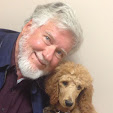In so many aspects of our lives, the hill we have to climb seems huge. I would like to lose more than 50 pounds, for example. I have lost them before, but they find me again. I can’t lose them in a day. Well, to be perfectly honest, I can, but I wouldn’t survive what it would take to do that! I can’t lose them in a week or a month. But I can lose them, every one of them, if I change some fundamental “practices”, starting now and continuing to the end of today and then starting again tomorrow and continuing to the end of tomorrow, and so on. I can lose 50 pounds in six months if I make small changes in my practices and stick to those changes. The weight I have lost by tomorrow this time will be measured in ounces. By this time next week, we’ll be measuring pounds, and a month from now, we’ll be thinking in terms of tens of pounds.
This kind of thinking also applies to the vast idea of creating an entire state in which every child is read to. The project has to be broken down into a workable unit in which some fundamental practice changes, and then the unit has to be enlarged. Our READ from the START program changes the practice of one parent. When the other adults in that family network see the change in the toddler, their practices change, too. Voila! Out of “baby steps” of change undertaken by one individual, as many as sixteen adult relatives see something they want a part of.
We don’t teach family reading one-on-one. We teach classes of twenty at a time. The instruction is so easy to learn to do that the program is easy to copy. How many new parents live in your neighborhood, village, or town? If you offered READ from the START once a year, could you change the practices in every family with a new baby? If you think this way, in baby steps, you can imagine how feasible and practical it can be to create a state that has the highest literacy rate in the world, right up there with Japan and Iceland!
This kind of thinking belongs in local museums, too. Thinking in baby steps, you can move from boring to fascinating in the space of a few minutes, and you can remain there. Your museum doesn’t have to change over night, either. You can achieve “fascinating” in the midst of appalling clutter, the wrong lighting, poor sense of focus, deteriorating textiles and paper goods, you name it! You can achieve the most important thing by changing your practices. The rest of the necessary adjustments can come later.
These days I see baby steps nearly everywhere I look. Things appear to be on the move in Missouri’s local museums. The other day I stopped in to see the Kingdom of Callaway Historical Society’s storefront museum and had a wonderful surprise. I walked in and started to look around and one of the volunteers walked from the back of the room to greet me and make me feel welcome. Then she showed me a bit of what’s new. She pointed out a trunk full of objects at “kid level” that people are allowed to touch and handle. I saw a yo-yo. I asked her if she knew how to demonstrate it. She took it out, backhanded it up and down, and I was instantly transported to an ancient memory of myself, age eight or nine, competing without warrant in a yo-yo contest on the stage of the Isis Theatre in New Egypt, New Jersey. It was one of those on-stage moments when you realize, too late, what the “real” artists are able to do.
That lovely little moment was made possible by someone who used social skills in a teaching environment. History, after all, is a social field. Our knowledge of basic friendliness is so much more pertinent to working in museums than our knowledge of history or of conservation methods. When you volunteer in a museum, your most important product is a memory. As you greet the visitor, you are the museum's most important asset. What sort of experience will you shape for your visitor?
I had another great time recently at the Harlin Museum in West Plains. This is another place with challenges, and yet there is a sense there that all challenges can be broken down into things that are possible by individuals working in small, useful steps. Does this space look too cluttered? Reduce the number of objects competing for space and lighten the color of the walls! Problem with these textiles? Let the air circulate better! Baby steps, baby steps; that’s the way to think about it. Select a scale of work where you can see improvement by next week. Change practices, reap the rewards.
Subscribe to:
Post Comments (Atom)




No comments:
Post a Comment